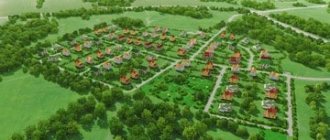Article 4. Land plots for personal farming
Article 4. Land plots for personal farming
Information about changes:
Federal Law of July 22, 2008 N 141-FZ, paragraph 1 of Article 4 of this Federal Law is stated in a new wording, which comes into force ninety days after the day of official publication of the said Federal Law
1. A plot of land within the boundaries of a populated area (household plot of land) and a plot of land outside the boundaries of the populated area (field plot of land) can be used to conduct personal subsidiary farming.
Information about changes:
Clause 2 amended from August 4, 2021 - Federal Law of August 3, 2021 N 340-FZ
2. A personal plot of land is used for the production of agricultural products, as well as for the construction of a residential building, industrial, domestic and other buildings, structures, structures in compliance with urban planning regulations, construction, environmental, sanitary and hygienic, fire safety and other rules and regulations. The parameters of a residential building being built on a plot of land must correspond to the parameters of an individual housing construction project specified in paragraph 39 of Article 1 of the Town Planning Code of the Russian Federation.
3. The field land plot is used exclusively for the production of agricultural products without the right to erect buildings and structures on it.
4. The maximum (maximum and minimum) sizes of land plots provided to citizens from state-owned or municipally owned lands for private farming are established by regulatory legal acts of local government bodies. The provision of such lands is carried out in the manner established by land legislation.
GUARANTEE:
On the maximum sizes and requirements for the location of land plots from agricultural lands, see Federal Law of July 24, 2002 N 101-FZ
Information about changes:
Federal Law No. 119-FZ of May 1, 2021 amended paragraph 5 of Article 4 of this Federal Law
5. The maximum size of the total area of land plots that can be simultaneously owned and (or) otherwise owned by citizens conducting private farming is set at 0.5 hectares. The maximum size of the total area of land plots may be increased by law of the constituent entity of the Russian Federation, but not more than five times. The specified maximum sizes do not apply in the case of provision of land plots in state or municipal ownership for free use, lease or ownership, in accordance with the Federal Law “On the specifics of providing citizens with land plots in state or municipal ownership and located on the territories of constituent entities of the Russian Federation”. Federations that are part of the Far Eastern Federal District, and on amendments to certain legislative acts of the Russian Federation.”
6. The turnover of land plots provided to citizens and (or) acquired by them for running personal subsidiary plots is carried out in accordance with civil and land legislation.
GUARANTEE:
Land plots provided from agricultural lands to citizens for running personal subsidiary and dacha farming, gardening, livestock farming and truck farming are not covered by the Federal Law of July 24, 2002 N 101-FZ “On the turnover of agricultural lands”
GUARANTEE:
See comments to Article 4 of this Federal Law
Dimensions of land plots for individual housing construction in the Moscow region
Special offers Maximum minimum and maximum sizes of land plots Maximum minimum and maximum maximum sizes of land plots are established by regional or local regulations for two cases. The first is for urban planning purposes, the second is for demarcating or providing citizens with state/municipal plots. Let's consider both situations using the example of the Moscow region and the city of Moscow (the latter, having annexed New Moscow, extended its laws to part of the actual suburban Moscow region).
Maximum minimum and maximum sizes for urban planning in the Moscow region The Urban Planning Code of the Russian Federation obliges local authorities to approve urban planning regulations for urban and rural settlements.
Rules and regulations
The concept of limit values is used in the Town Planning Code of the Russian Federation.
They are determined by town planning regulations along with other parameters of permitted construction:
- the maximum permitted percentage of development,
- necessary distances from boundaries to buildings,
- permitted number of floors and height of buildings.
The established limit values depend on the VRI, for example, for individual housing construction plots the established areas are smaller than for private household plots and peasant farms. To determine these values on the lands of settlements, not only land and urban planning legislation, but also the Rules for Development and Land Use are taken into account.
In the absence of approved PZZ, the limit values are determined by the local administration in its legal acts (clause 4 of Article 4 of the law on private household plots).
For plots located on federal lands, the permissible range of area should be determined by federal laws , and for plots on the lands of a subject - by regional laws .
A maximum of 0.5 hectares of private household plot land may be owned or otherwise held by a citizen . This value can be legislatively increased at the subject level, but no more than 5 times (clause 5, article 4 of the law on private household plots).
The established maximum values apply to all land plots, with the exception of
- granted ownership,
- rent
- or free use
on the basis of Law No. 119-FZ.
If a land plot was received for indefinite use, inherited lifelong possession before the adoption of the law on private household plots, or received as a result of donation, inheritance, purchase and sale, then the established limits of the permitted area do not apply .
Ownership rights can be registered for such plots.
Limit values
If a Russian citizen has a desire to engage in private farming, then he has the right to apply to the authorized administrative body with an application to allocate the appropriate plot to him.
Land plots using private household plots are of 2 types:
- Field - located on agricultural land outside the populated area . Intended only for the production of agricultural goods.
- Household plots are located within the boundaries of a populated area . In addition to agricultural use, it is allowed to erect auxiliary premises, residential buildings, and domestic buildings on them in compliance with sanitary, construction, and fire standards.
When providing a free plot of land owned by the state or municipality, the standards approved for a specific territory must be observed. In the case of paid acquisition of allotment, the range of permitted area is established in the PZZ.
If the development rules for your area are not defined, then the maximum and minimum size of plots for private plots will be established by a regulatory act of the authorized local government body.
Depending on soil fertility, the availability of free land and other factors, different regions determine their minimum and maximum for private household plots.
There is no single register that specifies the permitted area ranges. To find the necessary data you need to study the regulations of the local administration , which set the limit values. As a rule, this is a decision of the council of deputies of the municipality or a law.
Minimum land area
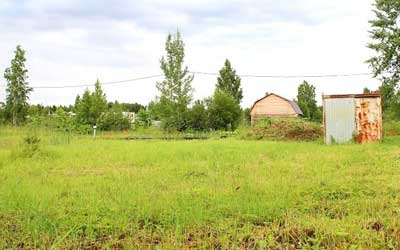
However, in some regions this value can be even 2 acres, which is not very rational, since it does not allow full-fledged private farming.
It is also necessary to be guided by the established minimum when dividing a land plot that is owned.
The introduction of area restrictions at the legislative level made it possible to prevent the uncontrolled division of plots, which could result in the formation of micro-plots or macro-plots unsuitable for rational use.
The table shows some established minimum land area for some regions of Russia:
| Name of district/region | Size, ha |
| Krasnoarmeysky district of Krasnodar region | 0.05 (homestead) for free allocation / 0.05 (homestead) for purchase |
| Samara Region | — |
| Shchelkovsky district, Moscow region | 0.04 (infield) / 0.1 (field) |
| Gatchina district of Leningrad region | 0,1 |
| Tula region | — |
| Odintsovo district, Moscow region | 0,06 |
| Chelyabinsk region | 0,02 |
| Kaluga region | 0,05 |
In the capital, the definition of the permitted range of areas should be established by the City Duma, but the corresponding document has not yet been adopted .
Maximum
Establishing a maximum size is necessary due to the limited number of private household plots that can be provided to citizens free of charge.
The average maximum value for the regions is considered to be 50 acres (0.5 hectares).
In the table we present some established maximums for the area of land for private household plots by region of the Russian Federation:
| Name of district/region | Size, ha |
| Krasnoarmeysky district of Krasnodar region | 0.15 (homestead) for free allocation / 0.50 (homestead) for purchase |
| Samara Region | 0,5 |
| Shchelkovsky district, Moscow region | 0.5 ha (homestead) / 1.0 ha (field) |
| Gatchina district of Leningrad region | 0,25 |
| Tula region (within the borders of the NP) | 0,15 |
| Odintsovo district, Moscow region | 0,25 |
| Chelyabinsk region | 0,2 |
| Kaluga region | 0,5 |
Determination and purpose of the private plot
A plot of private plots (personal subsidiary plots) is a plot of land, the documented purpose of which is to be used for the purposes of running private plots by the owner of the land and his relatives. The legislation of the Russian Federation does not provide a clear definition of a private plot.
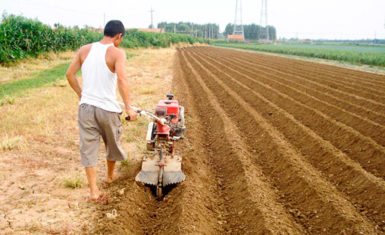
To classify an activity as a private household plot, the following conditions must be met:
- The activity is not entrepreneurial, that is, it does not imply making a profit. The non-commercial nature of the work frees you from the need to pay taxes and maintain accounting records;
- products are produced for own consumption, while surpluses can be sold regardless of volume;
- in the documents for the land there is a corresponding note about its use for running a personal similar farm;
- the labor of hired workers is not used. All necessary work is carried out by the owner and his family members.
In our country, the classification of land plots into two categories is generally applied:
- agricultural land;
- lands of populated areas.
A plot of private household plots can be classified into both categories, since a location is allowed both within the boundaries of a populated area and outside it . Depending on the category, the following features exist:
- Within the boundaries of the settlement, the plot is called a personal plot. Since the site belongs to the lands of settlements, a residential building and outbuildings of any kind can be built on it. Registration at this place of residence is also possible. Growing crops, raising small livestock and poultry is allowed. Purchasing a private plot of private plots on the territory of a populated area is convenient for those who want to run a household and permanently reside in a specially built house.
- Outside the populated area, the site is called field. Construction on it is not permitted, except for the construction of temporary structures necessary for farming. The temporary nature of the structure implies the absence of a foundation. Any agricultural activity is allowed, including cattle breeding and apiary placement.
Issues related to the plot of private plots are regulated by Federal Law dated July 7, 2003 N 112-FZ (as amended on May 1, 2016) “On personal subsidiary plots,” as well as the Land and Civil Codes of the Russian Federation.
Minimum and maximum plot sizes
The minimum plot size is determined by local authorities, for example, for the Moscow region it is 0.06 hectares or 6 acres. The maximum size of a plot for private plots is 0.5 hectares, but can be increased by decision of local authorities. The maximum allotment size is 2.5 hectares. The area provided by the state to citizens for farming depends on the total area of agricultural land in the region and the degree of their demand among the population.
Private household plots are often used to start agricultural activities, since the sale of surplus products in any volume is not prohibited. In this context, the size of the plot matters because... the specified area is not enough for large-scale activities.
Construction on land for personal farming
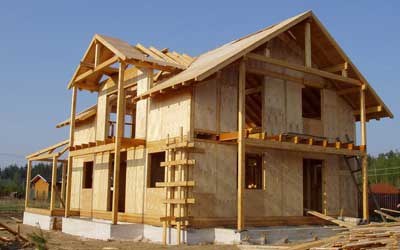
normal.
The dimensions of a residential building planned for construction on an allotment for private household plots are determined taking into account the available area of the allotment and the necessary restrictions and setbacks.
Be sure to take into account the following rules:
- For all individual residential buildings, it is mandatory to comply with the following requirements: height no more than 3 floors, area less than 1500 sq. m.
- On a plot of less than 12 acres, only one residential building . Additionally, the presence of auxiliary and outbuildings, a bathhouse, and a garage is allowed.
- The distance of a residential property from the “red line” is more than 5 m when the plot is located near the road, more than 3 m when located along the passage. The front fence is installed along the red line.
- Fire requirements determine the required gap between objects . The maximum 15 meters is determined for wooden buildings, the minimum 6 meters for stone ones.
- In accordance with the requirements of sanitary services, the distance between a residential property and neighbors’ fences must be at least 3 m; for outbuildings, it must be 1 m; poultry houses must be 4 m away. The largest distance is determined for baths and saunas; it is 8 m.
Compliance with construction and sanitary requirements is mandatory for personal plots. Owners of field plots may not strictly adhere to them.
Legislation on sizes
Each newly formed plot of land, regardless of the established type of intended use, has certain parameters, the dimensions of which must comply with the standards established by law.
The area of the created plot of land, which provides for the maintenance of personal subsidiary plots (LPH), peasant (farm) holdings (peasant farms) or agricultural production (Agricultural production) should not exceed or be less than the permissible area.
Limit sizes for private household plots, peasant farms and agriculture
Minimum parameters
It is not allowed to form a plot of land with a smaller area than is provided by law as the minimum minimum.
Federal Law No. 112 of 07/07/2003 “On personal subsidiary plots” determines that the minimum sizes of plots for such use are established by order of local authorities.
Federal Law of June 11, 2003 No. 74 “On Peasant (Farm) Farming”, as well as Federal Law of July 24, 2002 No. 101 “On the Turnover of Agricultural Lands” provides for the establishment of minimum maximum sizes of plots for agricultural production and farming according to the relevant legislation subject.
Table 1. Minimum plot areas
| Cities | For private household plots, ha | For peasant farms, ha | For agriculture, ha |
| Moscow | 0,25 | 40 | No more than 25% of the area of agricultural land |
| Saint Petersburg | 0,25 | 1 | No more than 10% of the area of agricultural land |
| Rostov-on-Don | 1 | 50 | No more than 20% of the area of agricultural land |
| Pyatigorsk | 0,15 | 50 | No more than 10% of the area of agricultural land |
| Nizhny Novgorod | 0,2 | 50 | No more than 50% of the area of agricultural land |
| Ekaterinburg | 0,25 | 50 | No more than 10% of the area of agricultural land |
| Novosibirsk | 0,15 | 25 | No more than 10% of the area of agricultural land |
| Khabarovsk | 0,2 | 300 | No more than 10% of the area of agricultural land |
When forming a plot for running a subsidiary or farming enterprise, as well as for agricultural production, it is necessary to comply with the maximum dimensions permitted by current legislation.
The establishment of certain maximum standards applied to the size of land plots primarily depends on the availability of a sufficient amount of free land in the relevant region, as well as on the demand for the use of land for agricultural and personal subsidiary purposes.
Personal subsidiary farming: general information and varieties
Private household plot means a plot of land allocated for agricultural needs. It is possible to erect outbuildings, cages and pens for animals on it. The products of private household plots, provided that no workers were used in the process of growing them, are not subject to tax upon sale. This is quite profitable, since the owner will be able to get maximum profit.
Subsidiary farms are divided into two types:
- Field areas.
- Personal plots.
The field site is located away from the populated area. It has clear boundaries, but there is no possibility of separating them. Roughly speaking, this is a small part of the field that cannot be surrounded by a fence. It is possible to grow crops on this land. The construction of residential buildings is excluded here. The owner can only erect a temporary structure, without a foundation (trailer trailer, iron garage). The plot of land is located within the city limits or in close proximity to it. As a rule, essential communications (water, electricity) are connected to it. On a personal plot it is possible to erect not only outbuildings, but also residential buildings, subject to the availability of permits. The land can be used for planting and raising livestock. Before receiving land for private household plots, the potential owner must take into account that its size is limited to 0.5 hectares issued per person. In some regions this value has been increased to 2.5 hectares.
Construction
Construction on private household plots is allowed only on personal plots; this rule is regulated in Article 4 of Federal Law No. 112-FZ. In this case, urban planning regulations and standards approved at the federal or regional level must be observed.
To build a private residential building on a personal plot, it is not necessary to obtain a building permit from local authorities. After completion of construction, the house is put into operation in a simplified manner; an interdepartmental commission is not created. Until 2021, registration of rights to such objects was carried out only on the basis of a declaration for the object, which was drawn up by the owner himself.
According to the rules of Federal Law No. 218-FZ, the simplified procedure for registering rights to residential buildings remains until March 2021, however, instead of a declaration, you must submit a technical plan of the house. From March 2021, registration of rights to residential real estate will be carried out only with full compliance with the cadastral registration procedure.
Who has the right to receive land for private household plots for free
In Art. 3 of the Federal Law “On Personal Subsidiary Farming” states that any capable citizen of the Russian Federation who owns or has permanent use of a land plot that meets the requirements of private household plots can engage in this type of activity. A land plot can be obtained free of charge from local governments. Ownership of it passes immediately or after the expiration of a certain period of use. As a rule, at the very beginning, a citizen receives a plot of land for free rent. If the land is used for its intended purpose, he will be able to register it as personal property.
The following will be able to obtain ownership of land for private household plots, without rent:
- Large families.
- Young families recognized as low-income.
- Winners of state awards.
The issuance of land free of charge is regulated by federal and regional laws. This indicates the need for preliminary familiarization with the registration of plots in a particular region.
Young low-income families will be able to receive land for private plots free of charge, subject to the following conditions:
- The marriage was officially registered.
- Spouses do not own apartments, private houses or land.
- The family was recognized as being in dire need of improved housing conditions.
- The spouses are officially employed.
As for the provision of land to the holder of state awards, these include: Heroes of Labor, Heroes of the Russian Federation and the USSR.
Representatives of small northern peoples can also receive land for free. For them, the free rental period is ten years. After their expiration, it is possible to register ownership.
Home construction
It is possible to build a residential building on a plot for personal farming. To do this, you need to complete paperwork.
You must have title documents for the land. They may vary depending on the specific situation:
- purchase and sale agreement, if the plot was purchased;
- if it was received as a gift, then the document of title is the deed of gift;
- the land could be inherited - in this case it will be necessary to rely on a will.
When constructing a house, a building permit must be issued.
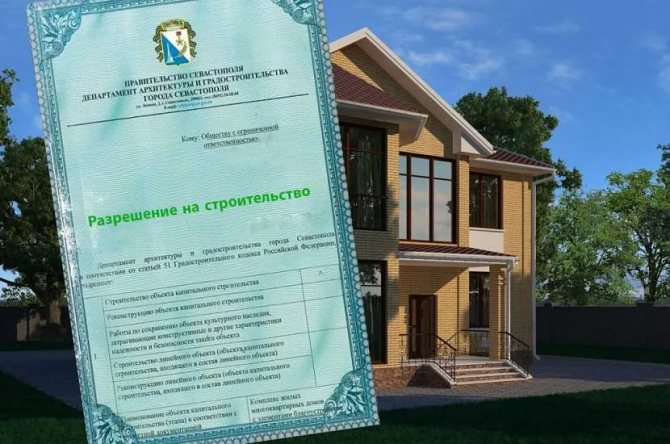
You can build a house without a building permit, but this may cause problems in the future
It is important to consider that the final confirmation of ownership of real estate is the presence of a corresponding entry in the Unified Register of Property Rights. A mandatory requirement when entering data into it is the execution of cadastral documents.
In order for a house to be officially inhabited, a cadastral passport must be issued for it.
The final document in this case is the commissioning certificate. It can only be signed if the house is built taking into account all the necessary requirements and standards.
If a house was erected without a building permit, then in accordance with Article 9.5 of the Code of Administrative Offences, a fine in the amount of 2 to 5 thousand rubles is imposed.
In the video, the lawyer shares his experience of obtaining permission to build a house in private household plots:
How to get a plot of land for private household plots for free
Obtaining a plot of land for private household plots on a free basis is a complex and lengthy procedure. It varies depending on individual situations.
However, a general procedure can be identified:
- Preparation of the necessary documentation.
- Submission of a complete package of documents and an application to the local administration.
- Obtaining a resolution on the allocation of land.
- Conducting land surveying and setting site boundaries.
- Obtaining an order to approve boundaries from the local administration.
- Contacting the Cadastral Chamber or MFC to register the plot and assign it a cadastral number.
- Providing copies of documents received from the Cadastre to the local administration and issuing a land title document.
- Applying to Rosreestr to register ownership of land or transfer it to perpetual lease.
Thus, the first thing a potential land owner needs to do is collect the necessary package of documents.
- Certificate on the number of square meters per applicant.
- A complete list of real estate owned by the applicant.
- Documentation confirming the right to receive land for free (for example, a certificate for a large family).
- A copy of the passport of a citizen of the Russian Federation.
The list of documents presented above is submitted to the local administration. Together with them, the citizen submits an application written in a strictly prescribed form. After receiving the documentation, administration employees check them and make a decision on the allocation of land. It is possible that the applicant will be refused. The decision must be announced no later than 30 days from the date of receipt of documents.
A positive decision is made in the form of a resolution on the allocation of land for private household plots. It indicates the area of land and its location. After receiving the resolution, the applicant must contact a specialized geodetic company in order to establish the boundaries of the site and draw up a land survey plan. This procedure is not free; all costs fall on the shoulders of the future owner. The cost depends on the organization’s prices and the area of the site. On average it is 10 thousand rubles.
Having received the land survey plan, the applicant must contact the Cadastral Chamber. Here the plot will be registered with the state, it will be assigned a unique number for identification and cadastral documentation will be developed. Next, the citizen will have to visit the local administration again to issue a document certifying the right to the land plot. Subsequently, it is subject to transfer to Rosreestr for final registration of title documentation. If a plot of land is transferred for free lease with the further right to register ownership after a certain period of time, and it is not cultivated or used for its intended purpose, the local administration reserves the possibility of forcibly confiscating it.
Construction on a private plot
Construction of a house on a private plot is possible if it is located within the boundaries of a populated area. This will require a special permit, the need for which is indicated in Art. 51 of the Town Planning Code of the Russian Federation. To obtain permission, contact the administration of the subject with a package of documents:
- application in the prescribed form;
- a document confirming ownership of the land plot;
- urban planning plan of the site. This paper is issued by the administration free of charge within 30 days after application.
- planning organization diagram. It is manufactured by the owner or developer independently. In most cases, a town planning plan is used for this, on which the future building is marked with a pen.
When building on an individual housing construction site, the planning organization scheme must be carried out by a specially accredited organization. No such restriction has been established with regard to land for personal subsidiary plots.
Permission to build a house is issued within 10 days after application. This document has legal force for 10 years. Since it is tied to the site, changing ownership does not require additional permission.
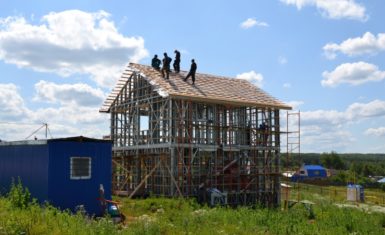
When building a house, fire, sanitary, hygienic and other safety standards must be observed. When giving preference to a plot of private household plots for construction, it is worth taking into account the presence of functional communication systems (electricity networks, water supply and sewerage systems, gas pipelines). Local authorities are not responsible for creating communications, as is the case with individual housing construction. The administration is also not obliged to guarantee the availability of hospitals, schools, kindergartens, shops and public transport stops in immediate access. Only owners of individual housing construction plots receive such guarantees. The owner of private household plots must be prepared to independently create networks using personal funds, which increases the cost of the site.
The building cannot be higher than 3 floors, but a 4th floor extension in the form of an attic is allowed. The total area of housing should not exceed 1,500,000 square meters.
When the construction is completed, you will need to contact the BTI service to prepare a technical plan for the construction with subsequent registration with the Cadastre authorities.
Address registration is possible in a house that is suitable for year-round living and meets the specified requirements, which is guaranteed by the commissioning certificate. The act is issued by a specially formed commission. If all conditions are met, registration can be issued for the owner and his family members.
The “Dacha Amnesty” program has been extended until 2021, within the framework of which, in order to register ownership of a house, only confirmation of rights to a private plot is required.
Sales and rentals
The purchase and sale of personal plot land is of a general nature if the transaction is concluded with a private person. When purchasing land from the municipality, the future owner must independently select the site. Information about the available options can be obtained by studying the cadastral map on the Rosreestr website. Obtaining information does not require payment. Next, you should contact the administration to allocate land. After registering the plot with the cadastre authorities, the owner’s property rights are registered.
The lease agreement is also concluded with an individual or local administration. In general, the lands of private household plots are leased in the form of a land share (or several). Before concluding a contract, a land surveying procedure will be required, which will make it possible to allocate specific land areas on the ground. In this case, it is possible to draw up one agreement for renting land from several owners.
When contacting the administration of the subject, an agreement is also concluded for the selected period. In the future, it is possible to purchase the land if a residential building is built on it.
Land lease for private household plots implies the intended use of the space, which must be specified in the document.
Reasons for refusal to allocate free land for private household plots
It has already been said above that the local administration can give either a positive or negative response to a request for a free allocation of land. Reasons for refusal may be:
- Providing an incomplete list of documents.
- Request for a large area that exceeds the established limit.
- Providing fictitious data.
- There are errors in the application or documents.
- The plot of interest to the applicant is allocated for the use of another person.
The local administration may also refuse to issue land due to its absence. The fact is that existing programs were not designed for the huge demand from the population. This led to a shortage of available land. In some regions there are queues for land, but they move quite slowly or stand still.
Conclusion. A limited number of citizens will be able to receive land for private household plots free of charge. Land allocation occurs by contacting the local administration. A citizen can receive ownership of the plot immediately or rent it for free, registering ownership in 5-10 years.







